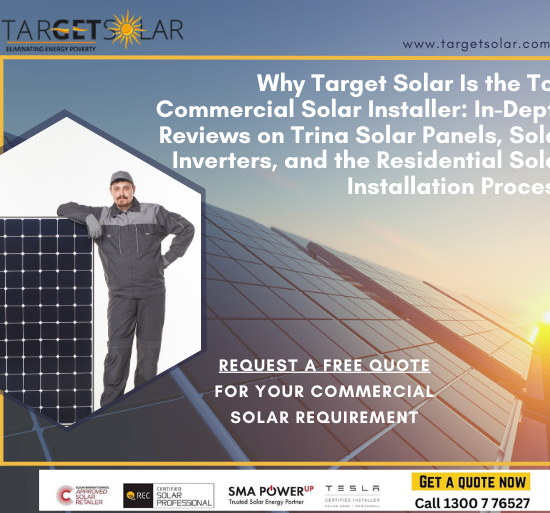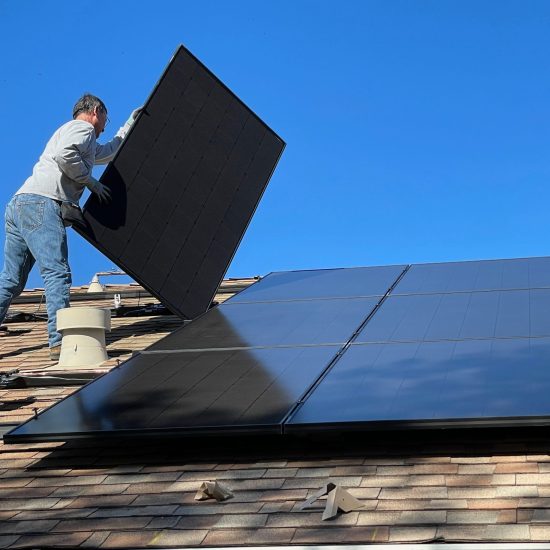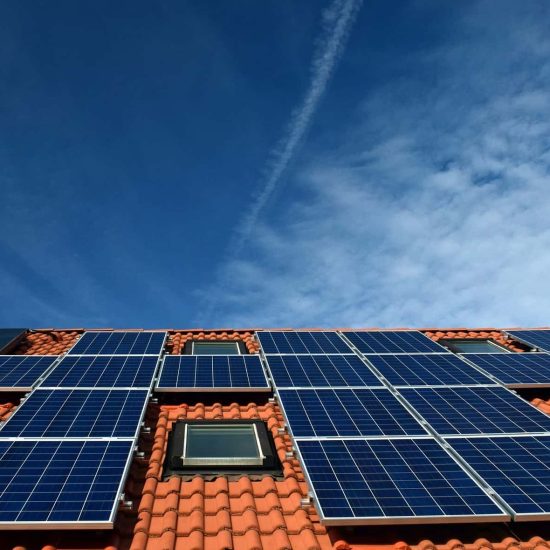The transition to solar energy is an exciting journey, promising both environmental benefits and potential cost savings. However, with numerous options and factors to consider, choosing the right solar energy system can seem daunting. This comprehensive guide aims to provide clarity, ensuring you make an informed decision tailored to your needs.
1. Understand Your Energy Needs to to Choose the Right Solar Energy System
The first step is to determine how much energy you consume. Review your electricity bills from the past year to understand your monthly and yearly consumption patterns. This will offer a benchmark for the size of the solar system you’ll need.
For instance, if your home typically consumes 5,000 kWh annually, a solar system that produces this amount will effectively offset your electricity costs.
2. Assess Your Available Space
The size of your solar system also depends on the space available for installation. Examine your roof’s size, shape, and orientation. Ideally, solar panels in the northern hemisphere should face south, and in the southern hemisphere, they should face north for maximum sunlight exposure.
Note: If roof space is limited, you might consider high-efficiency solar panels that produce more electricity per square foot.
3. Decide on the Type of Solar Panel
There are three primary types of solar panels:
- Monocrystalline Panels: Made from a single crystal structure, these panels offer high efficiency and a sleek design but can be more expensive.
- Polycrystalline Panels: Composed of multiple crystal structures, they’re less efficient than monocrystalline panels but generally more affordable.
- Thin-Film Panels: These are lightweight and flexible, suitable for surfaces that can’t bear much weight. However, they’re less efficient than the other two types.
4. Understand Inverter Options
The inverter transforms the direct current (DC) produced by solar panels into alternating current (AC) usable in homes. Two main types are:
- String Inverters: One inverter is used for the entire system. They’re more affordable but less efficient, especially if part of your system is in the shade.
- Microinverters: Attached to each solar panel, they ensure that even if one panel is underperforming, the rest remain unaffected.
5. Explore Storage Options
While not mandatory, a solar battery can store excess energy for use during nighttime or cloudy days. If consistent energy supply is a priority for you, consider investing in a solar battery system.
6. Budget and Financing
Solar installations are an investment. While the initial costs might seem high, remember that they can save you money in the long run. Some financing options include solar leases, power purchase agreements, or solar-specific loans.
7. Research Incentives and Rebates
Many governments offer incentives to promote solar energy. In Australia, for example, the government provides a rebate for households to install solar systems. Additionally, schemes like the Small-scale Renewable Energy Scheme can further offset costs. Always check local and federal incentives when considering solar.
8. Consider the Future
If you foresee a change in your energy consumption, such as buying an electric car, factor this into your decision. Some systems can be expanded later, while others cannot.
9. Choose a Reputable Installer
Your solar system’s performance is only as good as its installation. Research and choose a reputable installer, like Target Solar, to ensure optimal setup and performance.
10. Customer Benefits & Advantages of Going Solar
- Cost Savings: Over time, the savings on electricity bills can outweigh the initial costs.
- Environmental Impact: Solar energy reduces your carbon footprint, contributing to a healthier planet.
- Energy Independence: Generate your own electricity, reducing dependence on utility companies and fluctuating prices.
- Home Value: Solar installations can increase the resale value of your home.
Editor Notes:
How to Choose the Right Solar Energy System: Size Matters!
Choosing the right solar energy system for your residential or commercial space can seem like a maze with myriad options. This guide breaks down solar system sizes, explaining how they align with various energy needs, and how you can decipher your electricity bill to make an informed choice.
Residential Solar Systems
1. Small-Scale Systems (1 kW to 3 kW) Perfect for: Homes with limited space or those with lower energy needs.
- How it works: These systems typically consist of around 4 to 12 solar panels. Given optimal conditions, a 1 kW system can generate approximately 4 to 5 kWh daily.
- Bill comparison: If your daily consumption is in this range, a small-scale system might be your fit.
2. Medium-Scale Systems (4 kW to 7 kW) Perfect for: Average-sized homes with standard energy needs.
- How it works: These systems can have between 13 to 28 solar panels. A 5 kW system, for example, might produce around 20 to 25 kWh daily.
- Bill comparison: If your daily usage hovers around 20 kWh, this could be your ideal setup.
3. Large-Scale Residential Systems (8 kW to 10 kW) Perfect for: Larger homes or those with high energy requirements.
- How it works: Housing between 29 to 40 panels, an 8 kW setup can produce 32 to 40 kWh on a sunny day.
- Bill comparison: Homes consuming about 35 kWh daily may find this system suitable.
Commercial Solar Systems
1. Small-Scale Commercial Systems (10 kW to 30 kW) Perfect for: Small businesses or startups.
- How it works: This configuration can encompass 40 to 120 panels. A 15 kW system might churn out 60 to 75 kWh daily.
- Bill comparison: If a small business’s daily consumption is around 70 kWh, this is a viable option.
2. Medium-Scale Commercial Systems (30 kW to 100 kW) Perfect for: Medium-sized enterprises or larger office spaces.
- How it works: With 120 to 400 panels, an 80 kW system can generate up to 320 kWh on a clear day.
- Bill comparison: Enterprises consuming around 300 kWh daily would find this system fitting.
3. Large-Scale Commercial Systems (100 kW to 500 kW) Perfect for: Big businesses, industries, or vast office complexes.
- How it works: These behemoths can house between 400 to 2000 panels. A 250 kW setup might produce a massive 1000 kWh daily.
- Bill comparison: If an industry’s daily energy consumption revolves around 900 kWh, this is the go-to system.
4. Industrial Solar Systems (500 kW to several MW) Perfect for: Immense industries with towering energy needs.
- How it works: These installations, ranging from 2000 panels to much more, can generate energy output that scales to several MWs. For perspective, a 1 MW system can generate about 4000 kWh daily.
- Bill comparison: Industries consuming energy in the ballpark of several MWs would require these setups.
Factors to Consider:
When choosing a solar system, here are a few key factors to keep in mind:
- Energy Needs: Review your past electricity bills to understand your average monthly energy consumption. This will give you a sense of which system size is appropriate for your needs.
- Available Space: The space available for panel installation will determine the size of the solar system you can install. For example, a commercial warehouse might have ample roof space for a large system, while a townhouse may have limited space.
- Budget: Larger systems generally mean higher upfront costs, though they can provide more significant savings in the long run.
- Future Needs: If you anticipate your energy needs growing in the near future (e.g., purchasing an electric vehicle, expanding a business), consider investing in a larger system or one that can be expanded.
- Local Incentives & Rebates: Many regions offer incentives, rebates, or tax breaks for installing solar systems. Research local programs to see if they can help offset your initial investment.
- Technology: There’s a variety of solar panel and inverter technologies available, each with its pros and cons. Consider factors like efficiency, longevity, and warranty when selecting components.
- Installer Reputation: It’s vital to select a trusted and experienced installer (like Target Solar) to ensure the system is set up correctly and performs optimally.
Remember, solar is a long-term investment. It’s essential to choose a system that will serve your needs both now and in the future. Always consult with solar professionals to get a tailored recommendation based on your specific circumstances.
Conclusion
Embracing solar energy is not just an eco-friendly choice but also a sound financial investment. By understanding your needs and thoroughly researching options, you can find a solar solution tailored just for you. As always, when in doubt, consulting with professionals can offer clarity and direction. Remember, the sun offers its energy freely; it’s up to us to harness it efficiently.
For further assistance or queries, don’t hesitate to reach out to Target Solar’s expert team, or visit their location. Feel free to call at 1300 776 527.





